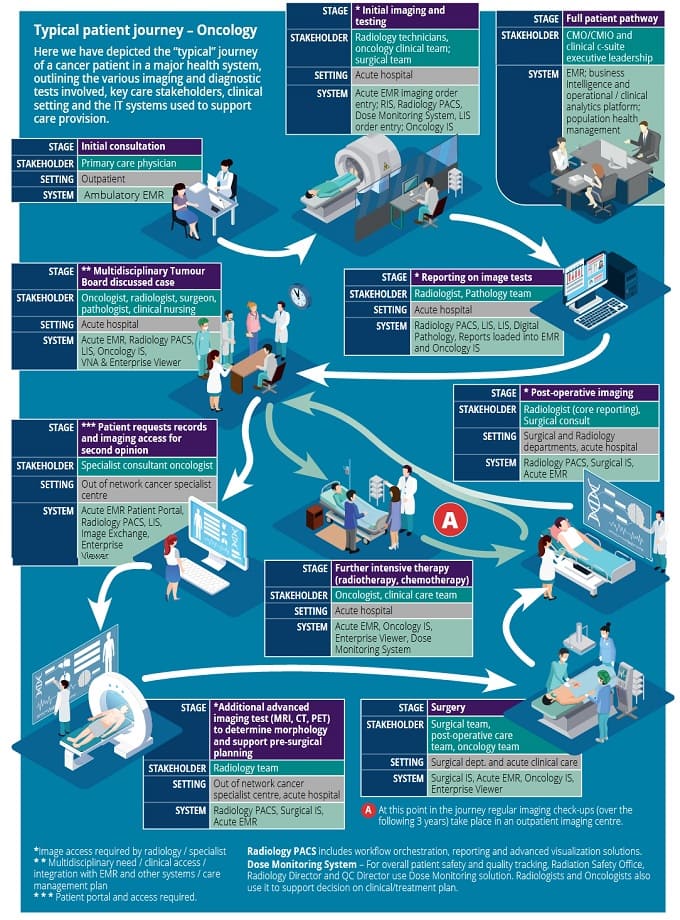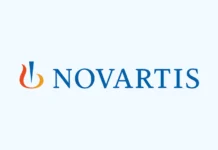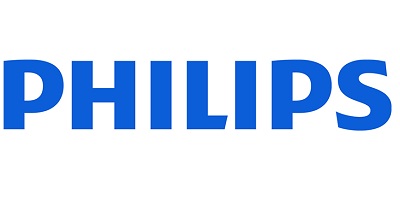Care pathways for many diseases and conditions are complex, involving interactions with many different care teams within a healthcare system. Medical imaging plays a significant role in an array of conditions and treatments. A patients’ journey through a healthcare system is commonly tracked via digital patient record, provisioned by and enterprise electronic medical record (EMR). However, many aspects of imaging and its associated content are poorly integrated with EMR software, leaving significant gaps in the care record. The complexity and variety of imaging, diagnostic procedures and reports integration with digital care records, is challenging.
This paper will explore the importance of access to a complete imaging health record for patients, clinicians, IT administrators and other stakeholders in care pathway. Further, it will address how an enterprise imaging strategy forms the foundation for establishing longitudinal imaging health records and the potential benefits for key stakeholders. Finally, it will outline the important considerations and fundamentals for healthcare providers adopting an enterprise imaging strategy.

Requirements of key stakeholders in the patient journey.
As outlined in the diagram on page 2, diagnostic and clinical stakeholders involved in care provision each have specific requirements. While the core EMR offers a central platform for tracking core administration, monitoring, clinical notes and reports, it rarely offers full access to diagnostic imaging data, which is usually managed and accessed in separate departmental systems. However, as outlined in the care pathway above, each care stakeholder as a specific need for access to the EMR and an array of diagnostic information in order to be able to deliver appropriate and high standards of care to the patient. Below we have outlined some specific informatics requirements for leading care providers in a care pathway:
RADIOLOGIST
● Consolidated access to all imaging from radiology and imaging studies conducted in other clinical departments, including prior history
● Access to imaging studies conducted in outpatient imaging centres both within and out-of-network
● Singular user interface (UI) and user experience (UX) across all diagnostic reporting, viewing and sub-speciality reading
● Access to broader patient history and relevant diagnostic content from the EMR within core diagnostic UI
● Clinical collaborative tools for inter- departmental consultation
ACUTE CLINICIAN (ONCOLOGY/SURGEON)
● Access full patient case history from EMR including all associated imaging, reports and diagnostic results
● Streamlined tumour-board case management tools to support collation of relevant patient record content from across the patient record and diagnostic IT systems – allowing access to all imagery and pathology information in context of the EMR
● Collaborative tools for inter-disciplinary consultation ongoing care pathway management
PRIMARY CARE PHYSICIAN
● Updates and access to care management plan and associated diagnostic test reports and associated imaging
● Referral and communication portal to acute clinical and broader diagnostic team
CMO/CMIO AND CLINICAL C-SUITE EXECUTIVE LEADERSHIP
● Aggregated view of major care pathways, outcomes and broader patient cohort management across health system
● Metrics and analytics on predictive cost of care, patient risk and care team resourcing
● Integration of clinical and diagnostic metrics into enterprise care management and population health solutions
IT ADMINISTRATOR
● Consolidate governance and maintenance, reducing manual processes for different applications
● Reduce IT resource required for custom APIs and time-intensive integration of system applications
● Minimise risk from security breaches and cyber-attack with enterprise-wide security management and compliance.
What is Enterprise Imaging?
As our cancer patient pathway shows, imaging is no longer performed and accessed solely in the radiology department today. Therefore, radiology specific software products can have limitations in supporting the integration and access to imaging and associated data across the health network. Some healthcare providers are therefore turning to an enterprise imaging strategy to centralize and consolidate all imaging data and associated content into a centralised platform, thereby allowing better access and improved data management and administration. However, each health provider is also approaching enterprise imaging in a different way, blurring definitions. The best consensus definition for enterprise imaging so far is offered from a partnership between two leading health informatics associations:
One existing framework that is available to providers to support planning and implementation of an enterprise imaging strategy is the Digital Imaging Adoption Model (DIAM), a joint project by the European Society of Radiology (ESR) and the Healthcare Information and Management Systems Society (HIMSS) in 2016. The 8-stage framework provides a set of sequential compliance goals (levels 0-4), with Level 4 requiring imaging management at an enterprise level, integration with EMR/HIS and seamless receiving, processing and access to images from all patient units and departments within the healthcare provider network. Levels 5-7 are non-hierarchical and include addition of advanced tools such as analytics and personalised medicine capabilities, Clinical Decision Support (CDS) and advanced Health Information Exchange (HIE).
For many healthcare providers, the DIAM framework provides a clear starting point and means of tracking progress versus peers; however, each healthcare provider may also need to address additional nuances based on the combination of software already in use at their institution and other strategic or clinical initiatives. Furthermore, the DIAM is mostly focused on enterprise imaging management; some providers may also need to more broadly address not only centralising access to imaging content, but also access to associated diagnostic and clinical content that supports image interpretation and broader diagnosis.
Healthcare informatics – Illuminate a new path through the care continuum
Learn how Philips – as a certified organization for the HIMMS Analytics DIAM – can help healthcare IT leaders adapt and advance digital health transformation at defining moments in a patient’s journey, which paves the way for precision care. For more information Click here
Laying the foundation for complete imaging health records. Read the Signify research white paper.



















